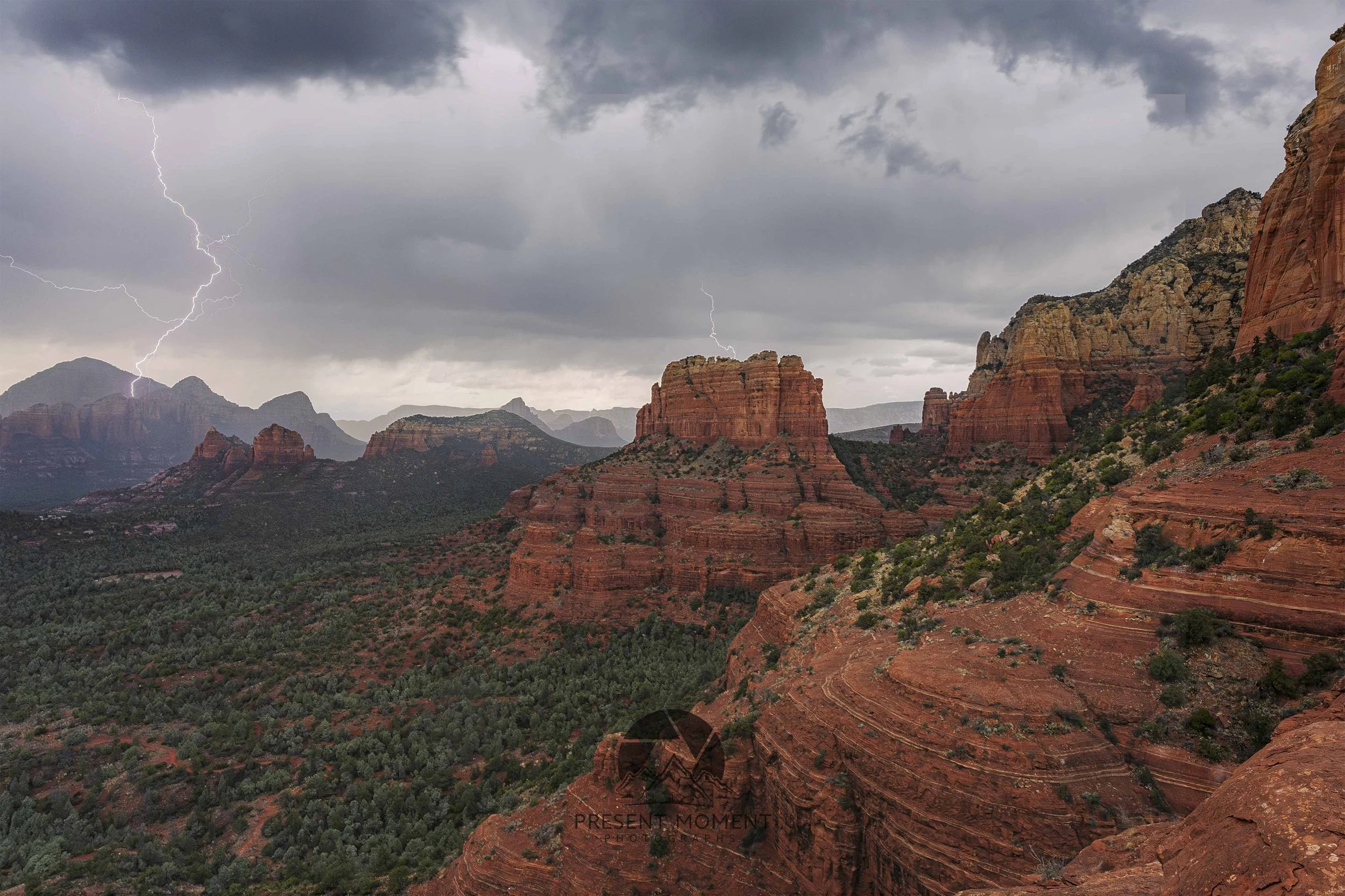Photographing Lightning Without A Trigger
Master Lightning Photography Without a Trigger
Capturing the raw power and beauty of lightning is a thrilling experience and will leave you as a landscape photographer amazed by your photograph. There are specialized triggers which can make the process much easier, however it's entirely possible to photograph lightning without one. Not all landscape photographers have a lightning trigger for many reasons such as cost or traveling. All you really need to capture a great lightning image is a camera, a tripod, a good composition, and maybe a little bit of luck!
Safety When photographing Lightining
When chasing lightning for photography it's crucial to prioritize safety. Thunderstorms and lightning can be unpredictable and dangerous, so always stay alert and seek shelter if conditions become hazardous. Try to be mindful of where the lightning is striking and the direction that the storm is moving. I use the app My Lightning Tracker and it is super helpful in seeing where the lightning is striking. Knowing this not only helps with safety but also in finding a compelling composition in the direction of the lightning.
Lightning Photography Gear Essentials
To photograph lightning successfully, you'll need:
A DSLR or mirrorless camera capable of manual exposure control
A sturdy tripod
An intervalometer
ND filter
A weather-resistant cover or umbrella for your camera
Lightning Tracker App such as My Lightning Tracker
Composition and Settings For Photographiing Lightning
Composing your shot during lightning is similar to doing it without lightning. Look for interesting foreground elements that can add depth and context to your lightning images. Try to include recognizable landmarks or other landscape features that can help anchor the scene. The tricky part of setting up a nice composition is that the storm and the lightning may not be in the direction you find the best composition, that doesn’t mean you can’t find a new and even better composition though!
As for settings, you'll want to use a relatively small aperture (f/8 to f/16) to ensure a decent depth of field and a low ISO (100-400) to minimize noise. The most important setting for photographing lightning without a trigger is shutter speed. You will want to keep your shutter open for 1-3 seconds so that if a lightning bolt comes through the frame or even a few, you can capture them. Having an intervalometer is super helpful as well so that you can continuously take images back to back and not miss a lightning bolt photo. Having some sort of ND filter will help in letting you keep your shutter open a little longer.
How To Edit Lightning Photography
Editing lightning photography is similar to any photography and everyone has their style. The advanced technique comes in with blending multiple images that have different lightning bolts in different places. Since the foreground doesn’t move but there is new lightning it is pretty easy to blend two images. In the image here of Sedona, Arizona I took two separate images each with one lightning bolt and blended them together to create a more dynamic landscape photograph. To do this load the images you want to blend into Adobe Photoshop as a stack. Then once the images are layers go over to blend mode and set it to “lighten” to blend the images.
Photograph taken in Sedona, Arizona



